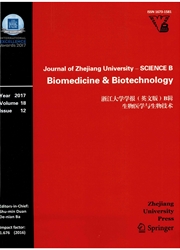

 中文摘要:
中文摘要:
mandible 的缺点在最近的年里更经常发生,并且经由骨头移植的临床的修理操作是困难的进一步由于一些内在的缺陷被改善。织物工程,是生物医学的工程的一个热研究领域,为 mandible 的缺点修理提供一个新方向。作为基础和织物工程的关键部分,脚手架是广泛地并且深深地关于 biomaterial,结构,设计,和制造方法的基本理论,以及原则学习了。然而,很少研究都不为诊所修理操作目标为织物新生。因为 mandible 的骨头在存在研究有特殊结构,而非一致、常规的结构,方法论在这篇论文为 mandible 的缺点修理基于织物工程被建议。关键步考虑支架数字设计,例如外部形状设计和内部微观结构,设计直接详细基于三角形的网孔被讨论。由从快速的原型制作的测试部分分析理论模型和测量数据,建议方法论的可行性和有效性适当地被验证。关于要做在未来支持它的临床的申请的机械、生物的改进需要的更多的工作。
 英文摘要:
英文摘要:
Mandibular defect occurs more frequently in recent years,and clinical repair operations via bone transplantation are difficult to be further improved due to some intrinsic flaws.Tissue engineering,which is a hot research field of biomedical engineering,provides a new direction for mandibular defect repair.As the basis and key part of tissue engineering,scaffolds have been widely and deeply studied in regards to the basic theory,as well as the principle of biomaterial,structure,design,and fabrication method.However,little research is targeted at tissue regeneration for clinic repair operations.Since mandibular bone has a special structure,rather than uniform and regular structure in existing studies,a methodology based on tissue engineering is proposed for mandibular defect repair in this paper.Key steps regarding scaffold digital design,such as external shape design and internal microstructure design directly based on triangular meshes are discussed in detail.By analyzing the theoretical model and the measured data from the test parts fabricated by rapid prototyping,the feasibility and effectiveness of the proposed methodology are properly verified.More works about mechanical and biological improvements need to be done to promote its clinical application in future.
 同期刊论文项目
同期刊论文项目
 同项目期刊论文
同项目期刊论文
 期刊信息
期刊信息
